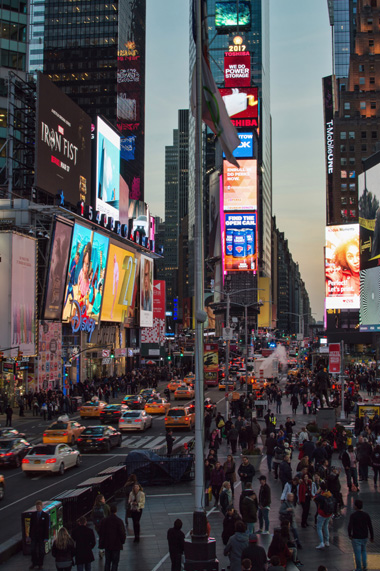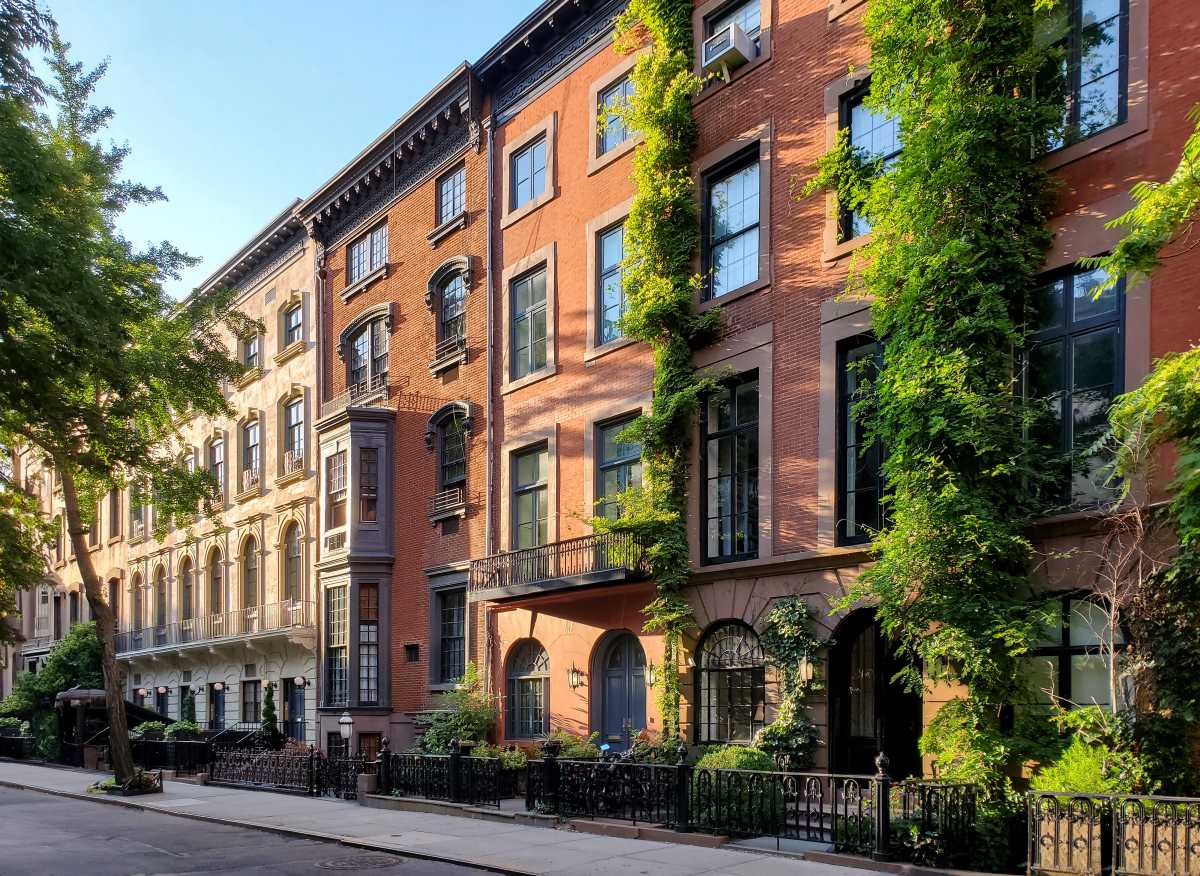
BY JACKSON CHEN | With Times Square’s recent debut of more than two acres of new pedestrian space, a group influential in setting policy for the Crossroads of the World is now moving on to shape a more sweeping vision for the area that will appeal to New Yorkers and visitors alike.
Beginning in 2013, Times Square underwent a $55 million renovation project to create pedestrian plazas from West 42nd to 47th Streets. For nearly four years, the construction bottlenecked the already heavily trafficked area, at times worsening pedestrian and auto congestion. But by the end of 2016, right before the masses flooded the streets for the Times Square ball drop, the city had completed work on more than 85,000 square feet of paved areas.
And, in another move aimed at improving conditions and enhancing the experience of visiting the area, last June city agencies worked with the Times Square Alliance to create “designated activity zones” that limited commercial activities — from ticket sellers trying to rope in audience members to costumed characters and desnudas asking for tips — to teal-painted sections measuring eight feet by 50 feet.
With two new acres of open space plus some measure of order introduced to the area, the alliance and its president, Tim Tompkins, have now embarked on sketching out a vision of Times Square moving forward. The organization’s main goal is to strike the right balance for an area known to attract tourists with its bright lights and high energy but which also aims to become a more welcoming space for everyday New Yorkers.
“We’re going into this new phase where I think it’s really important that the plazas be viewed as an asset after years of being under construction and a big mess,” Tompkins said at a recent Community Board 5 meeting. “We want to get it right, and we’ll probably make some mistakes.”
In tackling this tricky task, Tompkins has reached out to the important players active in the Times Square community, including CB5, the city Department of Transportation, and the New York Police Department.
The coalition is also looking to its own data, based on regular surveys it conducts in Times Square. In an August 2016 survey, when the construction work was still around, 81 percent of visitors coming from throughout the country were pleased with their experience. However, those respondents who identified themselves as part as the tri-state area were less enthusiastic — with only 68 percent of them saying they enjoyed their visit.
As might be expected, New York City residents rated Times Square the most critically. A bare majority of them — 52 percent — voiced satisfaction.
“The New York residents are still the toughest folks to please, which is not surprising and that’s frankly the standard we hold ourselves to,” Tompkins said.
Kaitlyn Kelly, an Upper East Sider who works in Midtown, said the only reasons she visits the area are for Broadway shows or to shepherd visiting relatives around.
“I try to avoid Times Square because of the insane crowds,” Kelly said. “I admit that for visitors it is a really cool spot… but as a local it’s just a huge tourist spot — therefore, it’s always crowded.”
To appease those New Yorkers who have the greatest reason to frequent Times Square, Tompkins and his team have scoured the surveys and figured out some common themes that would please them — and perhaps encourage others to visit more often.
While Times Square will always have its major commercial elements, CB5 and survey respondents offered feedback that they’d like the area to offer civic space for free community events and simply hanging out. Tompkins said the alliance is considering ways to create small-scale live entertainment events and public art installations that would entice New Yorkers.
Something that has won the most positive feedback has been the food kiosk offerings, and Tompkins believes on that score quality improvements can be made. He said the food stalls would be slimmer and more attractive and offer a selection curated more toward what New Yorkers may enjoy.
“Of course a tourist from Kentucky or Rome is still going to be razzle-dazzled by the energy of Times Square,” Tompkins said. “The key thing is when one finds a place is legitimately occupied by locals then that validates it in the eyes of tourists.”
When informed that a New Yorker-friendly vision for Times Square is in the offing, Kelly said she would be more encouraged to visit the hectic area if there were art installations or live events, even if she felt they would attract more tourism.
In terms of welcoming more residents, the Upper East Sider suggested fewer chain restaurants and more local restaurants doing their own unique events.
CB5’s Parks and Public Spaces Committee offered initial notes to Tompkins advising him to keep in mind the bicycle traffic that goes through the area and also consider carefully the layout of where the food kiosks would be.
“It’s rare we get to indulge in just being constructive and visionary,” Clayton Smith, CB5’s parks committee chair said. “It’s nice to be able to just talk about the vision for the spaces.”
The alliance’s ideas are still rough and are expected to take on a more specific form after its April 24 annual public meeting (for details visit timessquarenyc.org). The group is currently in continuing conversations with CB5, the DOT, and the NYPD to better flesh out its vision of Times Square’s future.




































